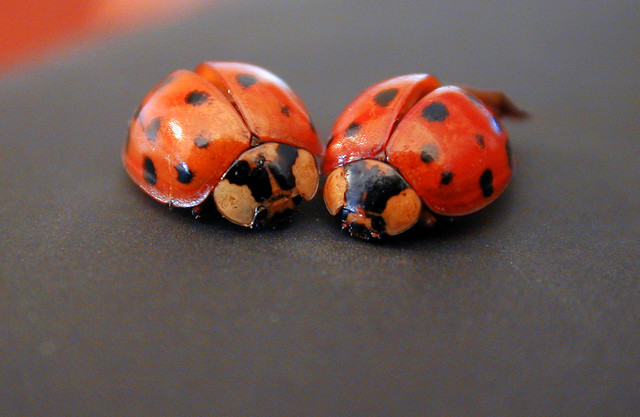Anyone who’s ever dealt with Sacroiliac (SI) joint dysfunction or pain knows how much of a soul suck it can be.
It’s something that’s very common, but altogether mysterious because it’s such a tricky joint to begin with.
This isn’t going to be a post on SI joint dysfunction. There’s really nothing I can say or add to the conversation that hasn’t already been stated.
HERE’s an excellent post by my boy Dean Somerset which breaks down the anatomy and some programming considerations.
And for the more clinically minded, HERE’s a post by Mike Reinold on the assessment side of things.
Suffice it to say, when it comes to SI joint shenanigans there’s no one universal approach or train of thought as to the best way to rehab it or resolve it.
It’s kind of like driving through Boston. No one really knows what the heck is going on.
Last weekend at The Fitness Summit I had the opportunity to listen to Dr. Erika Mundinger speak on the topic, and really liked what she had to say.
One “delicious Bon Bon” (< – to steal a quote from Mark Fisher) of information I gleaned from her talk was the idea of including more rotational movements as part of SIJ dysfunction rehab/treatment.
Specifically she talked about the Posterior Sling and how, for many suffering from SIJ dysfunction, it’s often neglected. Or, rather, it’s addressed from the wrong vantage point.
For most, sagittal plane movements are going to be money. Most will be able to handle sagittal loading via bilateral squats and deadlifts fairly well. This will generally always be the starting point.
Where that starting point actually is…depends. Some people will be on one end of the spectrum and need to learn how to perform a basic hip hinge and hammer floor based core stability (deadbugs, quadruped drills, etc).
Others will be able to be more aggressive and perform more traditional DL and squat exercises.
HOWEVER, as Dr. Mundinger noted, it’s these very sagittal plane (flexion/extension) dominant exercise that may be jacking up people’s SI joints further.
Sometimes people gain too much rigidity in the sagittal plane and it causes it’s own set of issues.
Hypermobility and laxity is a common “correlation” with SIJ dysfunction, and it makes sense to build more stability in that area with said movements. But Dr. Mundinger’s commentary about including more transverse plane (rotational) movements made a lot of sense to me.
Which serves as a perfect opportunity to introduce the next Exercise You Should Be Doing.
Rotational Deadlift
It’s no secret I love me some deadlifts. There’s no one exercise that gets me pumped up or gratifies me more than the deadlift.
In every sense: it’s you vs. the bar.
It helps build bulletproof athletes and makes men out of boys (women out of girls?).
Either way, it’s a staple movement and one I feel is about as versatile as they come, whether you’re an athlete or regular Joe/Jane, someone interested in powerlifting or just looking to move well and feel better……..
…..the deadlift can accomplish a lot.
FULL DISCLOSURE: Rotational Deadlifts WILL NOT get you yoked.
Sorry meatheads.
[Cue hilarious video I found on the internet now……NSFW]
For those still reading….lets continue.
I do feel it’s a variation that many people can incorporate into their training repertoire injured or not, but one that obviously has increased merit with those suffering from SIJ pain.
What Does It Do: As alluded to above it gets you out of the sagittal plane, and as Dr. Mundinger suggested (much to the GASPS of her colleagues), it relieves some of the stress off of the SI joint and challenges it in the transverse plane.
Of course this is going to be a case-by-case scenario, and it’s important that someone OWNS sagittal plane before introducing rotational movements.
But it makes sense – at least to me – that constantly hammering the same pattern(s) over and over and over again could be detrimental. Adding in (some) rotation can be exactly what the doctor ordered.
Pun intended.

Dr. Erika Mundinger
Key Coaching Cues: for some, you’ll have to tame your inner meat-head. This IS NOT going to be an exercise where max-effort is the goal.
Start with a KB on one side and sit (rotate) INTO the hip. Grab the handle as if you were trying to melt it in your hands (this will force the shoulder to pack itself through a process called irradiation) and then “deadlift” the bell up to waist height.
For some people I may even have them “hover” the bell above the floor a couple of inches for a few seconds to help them maintain tension and to keep proper spinal position.
You’ll then reverse the action and rotate into the opposite hip, coming to a complete stop on the other side.
(Again, sometimes, I’ll have people hover for a few seconds above the floor).
And that’s pretty much it.
There are ways to progress this movement. You can perform with TWO kettlebells or you can even perform it as a 1-legged variation.
Give it a try and let me know what you think.
UPDATE: scratch that, you can go beast mode on rotational deadlifts. You win this time David Dellanave.









